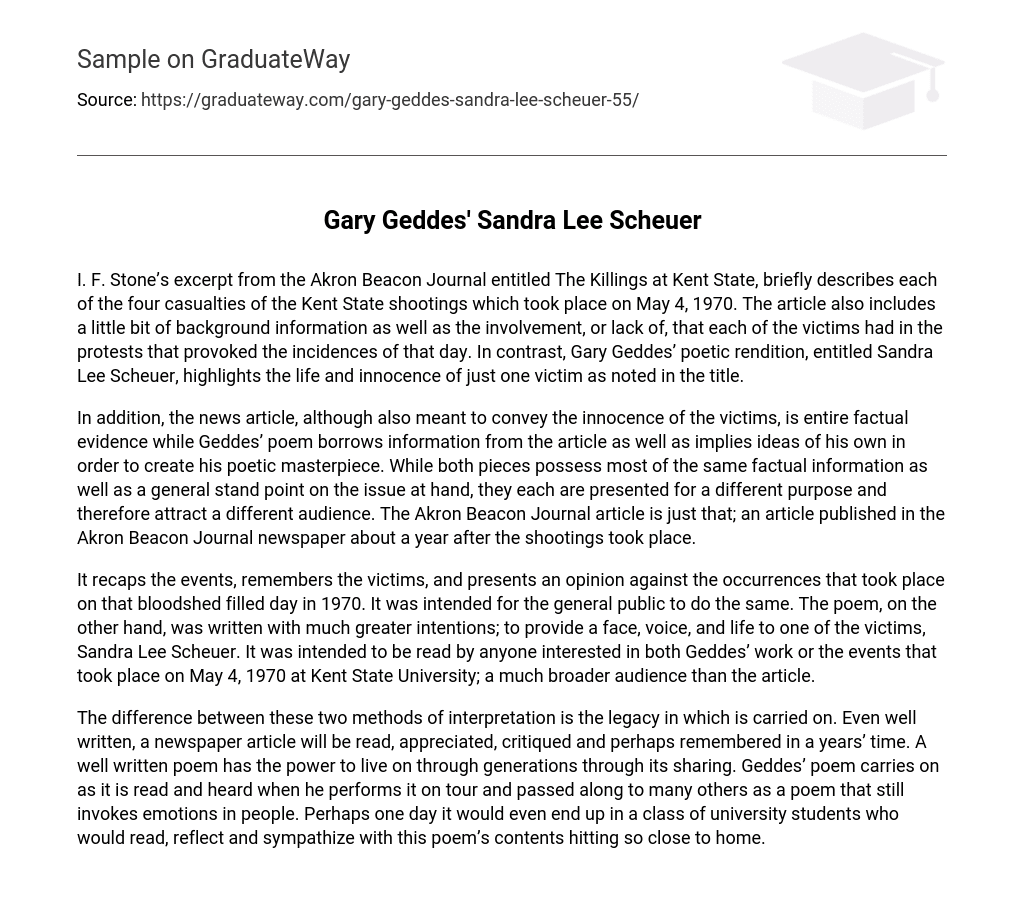I. F. Stone’s excerpt from the Akron Beacon Journal entitled The Killings at Kent State, briefly describes each of the four casualties of the Kent State shootings which took place on May 4, 1970. The article also includes a little bit of background information as well as the involvement, or lack of, that each of the victims had in the protests that provoked the incidences of that day. In contrast, Gary Geddes’ poetic rendition, entitled Sandra Lee Scheuer, highlights the life and innocence of just one victim as noted in the title.
In addition, the news article, although also meant to convey the innocence of the victims, is entire factual evidence while Geddes’ poem borrows information from the article as well as implies ideas of his own in order to create his poetic masterpiece. While both pieces possess most of the same factual information as well as a general stand point on the issue at hand, they each are presented for a different purpose and therefore attract a different audience. The Akron Beacon Journal article is just that; an article published in the Akron Beacon Journal newspaper about a year after the shootings took place.
It recaps the events, remembers the victims, and presents an opinion against the occurrences that took place on that bloodshed filled day in 1970. It was intended for the general public to do the same. The poem, on the other hand, was written with much greater intentions; to provide a face, voice, and life to one of the victims, Sandra Lee Scheuer. It was intended to be read by anyone interested in both Geddes’ work or the events that took place on May 4, 1970 at Kent State University; a much broader audience than the article.
The difference between these two methods of interpretation is the legacy in which is carried on. Even well written, a newspaper article will be read, appreciated, critiqued and perhaps remembered in a years’ time. A well written poem has the power to live on through generations through its sharing. Geddes’ poem carries on as it is read and heard when he performs it on tour and passed along to many others as a poem that still invokes emotions in people. Perhaps one day it would even end up in a class of university students who would read, reflect and sympathize with this poem’s contents hitting so close to home.





